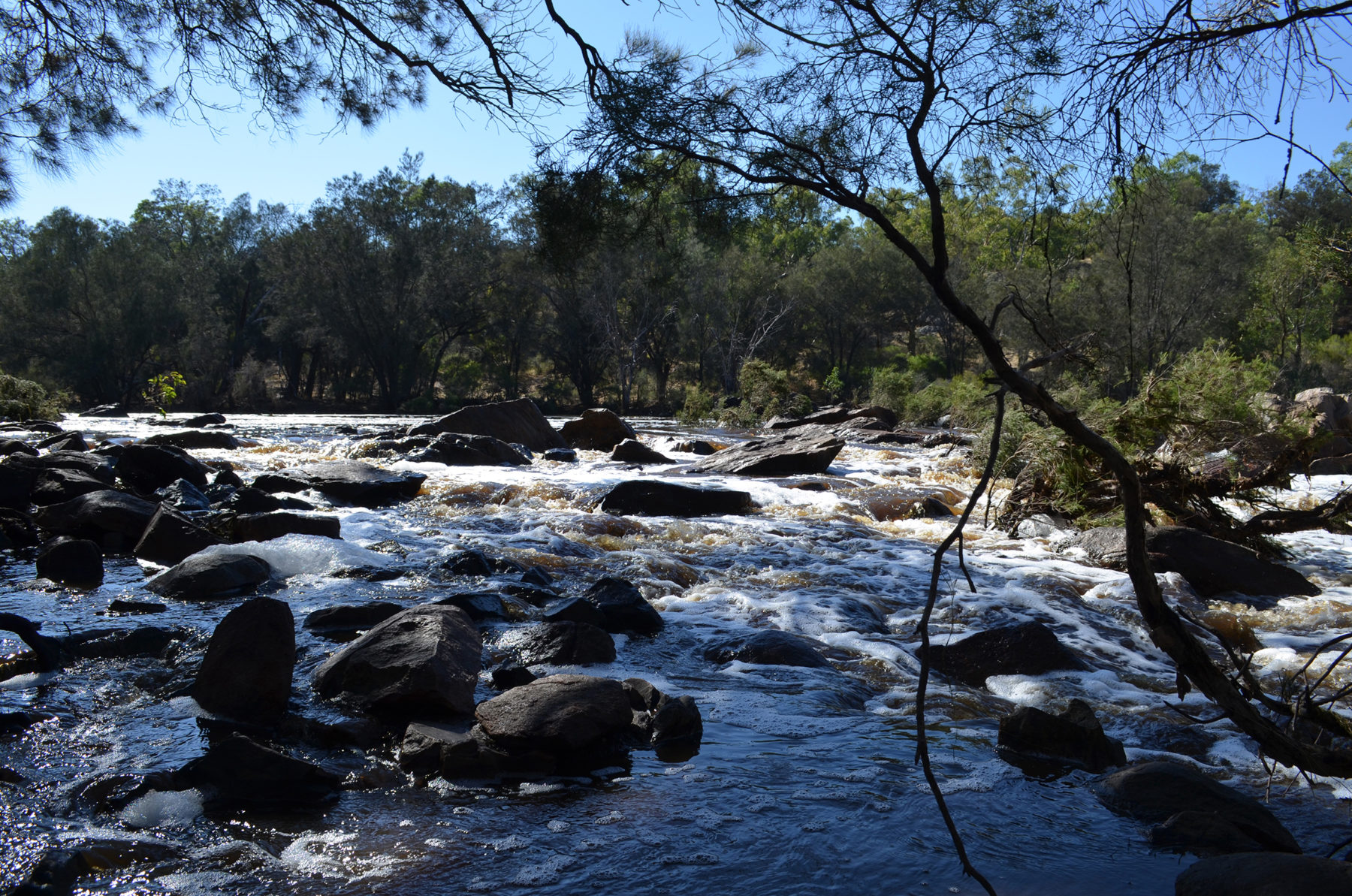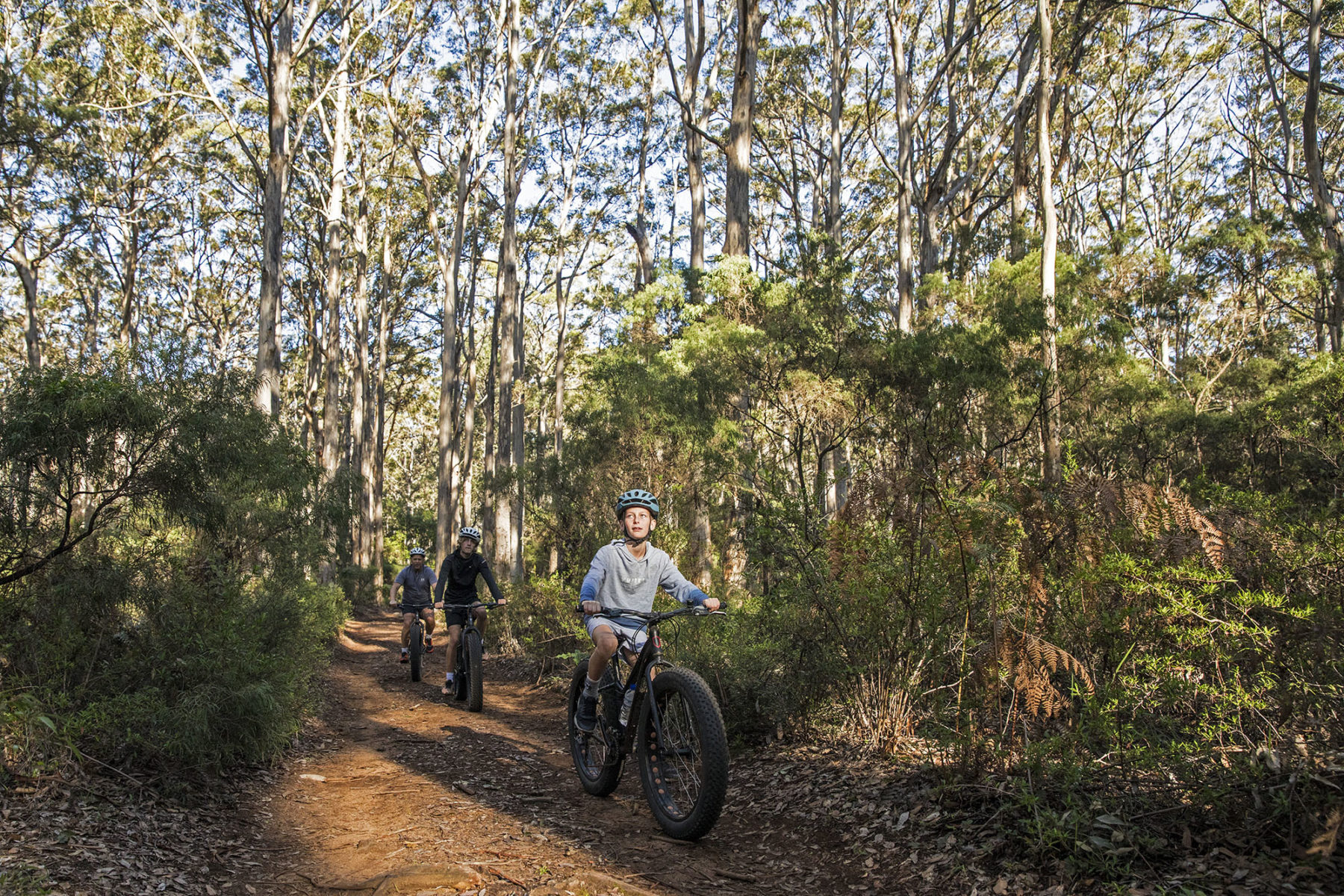Walyunga National Park
Barely an hour from Perth, this 1800-hectare national park is a popular day-trip destination for Perth residents but really deserves at least two days – especially if you’re a keen bushwalker, paddler or angler. The park’s main feature is the Swan River, which runs through the park and offers great swimming and paddling (kayak or canoe), as well as the chance to explore the river’s edge on foot. In the winter months the water level is higher, resulting in some cracking sections of rapids to negotiate (the famous Avon Descent – a whitewater paddling event – is held each August). In summer, when the river is generally lower, the park’s three deep pools – Syd’s Rapids, Walyunga and Boongarup – are popular swimming holes. For anglers, you can throw a line in for trout – not a bad way to bag a feed for the night’s camp.

The national park is characterised by spectral flooded gum trees running along the side of the river. As you move up the valley slopes the vegetation changes to more open wandoo (white gum) woodlands before you encounter impressive examples of jarrah trees up on the ridgelines. For lovers of wildflowers, springtime sees the landscape a kaleidoscope of colour as the numerous varieties of wildflower bloom.
According to WA National Parks, Walyunga NP contains what is one recognised as one of the largest aboriginal campsites – one that was still used by the local Nyoongar people late last century, with claims it has been used as a meeting place for more than 6000 years. This site is located at the western end of Walyunga Pool (the large pool is found at the end of the road of the same name).
For bushwalkers (young and old) the park’s tracks are ideal; for families, the flat 5.2km Syd’s Rapids Trail (leaving from Boongarup Pool), will take you to some of the sections of rapids used in the Avon Descent (they can be seriously challenging in high-water conditions), while the Echidna Trail – an 11km loop that will take three to four hours, and starting from Walyunga lower pool – is more of a challenge for experienced bushwalkers.
The rewards of this walk are the chance to stroll through fields of wildlflowers (when in season) as well as along the Swan River’s banks before you ascend through heathlands on the way to the steep summit of Woodsome Hill (the views over the Avon Valley are brilliant). Keep an eye out for the park’s rich birdlife (black-faced cuckoos, parrots, galahs, etc.) while you take a breather before the descent.

Walyunga NP may be a small ‘blip’ on the radar, but it does offer all we love in regards to tranquil bush camping settings, oodles of bushwalking and some fantastic swimming and paddling opportunities, all within an hour of the bright lights of Perth.
Leeuwin-Naturaliste National Park
Claimed to be the most popular national park in WA, this 19,092-hectare giant lays its claim to that crown thanks to the abundant outdoor activities inside it – surfing, swimming, diving, hiking, cycling, touring, camping, fishing and more – as well as the landscape combo of pristine coastline abutting the often-ferocious swells of the Indian Ocean, meshed with heavily timbered forest behind the dunes. Throw in the added bonus of historic homesteads and lighthouses, as well as some amazing caves, and Leeuwin-Naturaliste National Park fills that cliché of something for everyone. To that effect, the park is really a long-weekend destination at a minimum, but thanks to its manageable distance from Perth, that just gives you the excuse to return more than once.

The park has four campgrounds – Boranup, Point Road, Conto and Jarrahdene – with all of these being of the first-arrive, best-score type. Point Road has probably the most appeal as it is accessed via a 4WD-only track and is a small campground sheltered from winds on the edge of the Boranup karri forest, with access to the nearby coastline via Point Road itself. Conto, with 116 camp sites, is ideal for larger groups, and those after more space along with ‘luxuries’, such as a campers’ kitchen, tables, toilets and barbecues. It is right next to Conto Springs Beach.
Jarrahdene campground is south of the Margaret River and nestled beside the historic site of the Heritage-listed Jarrahdene Mill, built in 1896. The campground has 36 camp sites with toilet blocks and sheltered barbecue areas scattered throughout. The 135km Cape to Cape walking track links Cape Naturaliste Lighthouse in the north and its Cape Leeuwin counterpart in the south (both are open to visitors). You can walk a number of the track’s sections as day-walks or even shorter ambles if you wish.

For swimming or diving, there are numerous beaches to choose from. The more sheltered Cape Naturaliste and Shelley Cove in the north offer ideal swim spots for families, along with Bunker Bay, located on the northern side of Cape Naturaliste. Anglers can fish all along the coastline – and off-shore (in your own boat or with a charter company). Expect to (hopefully) catch salmon, snapper, tailor and dhufish – but be aware of bag limits and please only keep what you will eat. Surfing is super-popular here, with the Indian Ocean swells regarded as top-notch by wax-heads worldwide. Margaret River, Guillotines, South Point, Gallows – are just some of the popular surf spots.
Away from the coast and it is time to head underground. The park contains numerous caves, with visitors able to explore any number of them, including Calgardup and Giants Cave. You can also opt for guided tours of Mammoth Cave and Lake Cave.
Leeuwin-Naturaliste NP is chockas with stuff to do and, as mentioned, it is so close to Perth. Our best advice: tackle a long weekend in the north, then return a few more times to spend weekends in the south and also to explore the park hinterland. Done!



